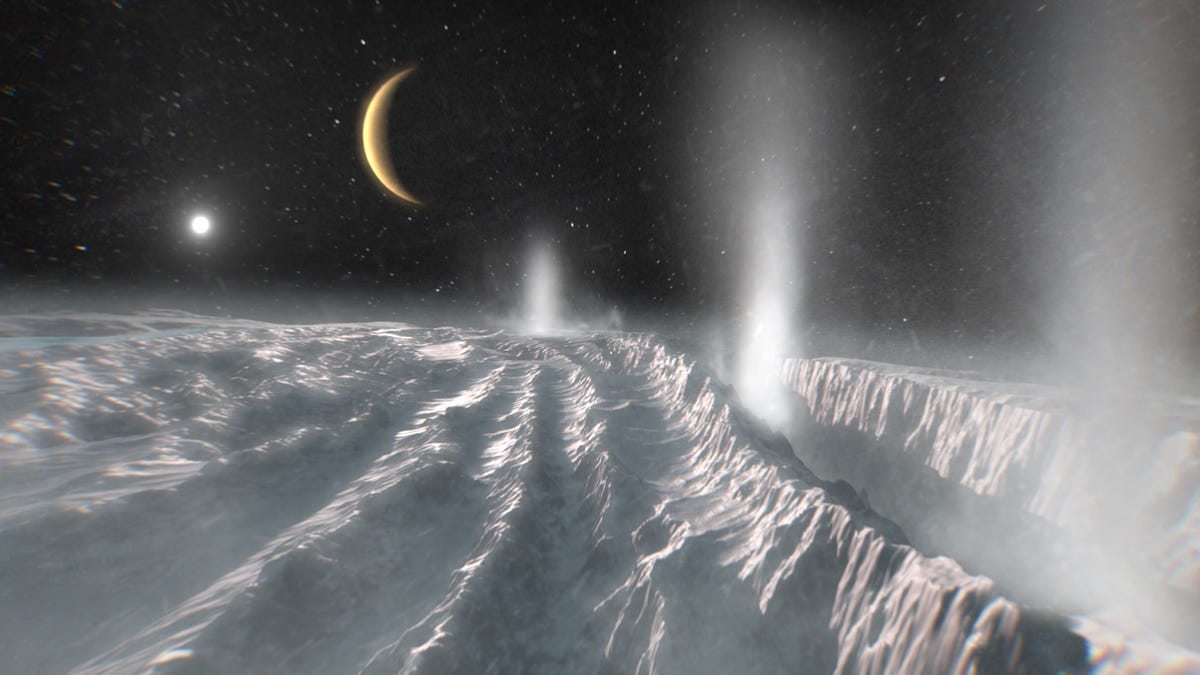European Space Agency Ready to Study the Original Structure of the Universe Leave a comment

The future of space exploration is looking absolutely thrilling, as the European Space Agency has revealed its long-term plans for research that will, hopefully, identify potentially life-hosting planets beyond our solar system and scrutinize the earliest structures of the universe.
Earlier this week, the ESA confirmed its plan to launch the EnVision orbiter to Venus, just days after NASA announced its own missions to visit the scorched wasteland of a planet. But now the agency is looking even further into the future, laying out its ambitions through the year 2050.
The missions are slated for 2035 to 2050 and will all be large, or L-class—the flagship missions of the agency, which typically launch once a decade. The ESA refers to each of its episodic mission planning cycles as its “Cosmic Vision” and the half-century mark as “Voyage 2050.”
“The Voyage 2050 plan is the result of a significant effort of the science community, of the topical teams, and of the senior committee who contributed to such a lively and productive debate to arrive at this outstanding proposal,” said Fabio Favata, head of the agency’s Strategy, Planning and Coordination Office, in an agency release. “Voyage 2050 is setting sail, and will keep Europe at the forefront of space science for decades to come.”
G/O Media may get a commission
In a meeting this week, the ESA’s science program committee announced the three chosen themes for future L-class missions: the further exploration of our Solar System’s giant moons; the observation of temperate exoplanets in our galaxy; and the study of the evolution of the first structures in the early Universe.
The first of these themes continues the trend of moon exploration seen in mission proposals like NASA’s Trident and the ESA’s JUpiter ICy moons Explorer, or JUICE, an L-class mission set to launch next year. JUICE will spearhead the work on Jovian moons, but it sounds like the ESA will double down in the decades ahead—perhaps heading beyond Jupiter to the Neptunian or Saturnian moons. Hopefully, those plans could even include a lander or a drone like NASA’s Dragonfly, which is heading to Saturn’s moon Titan in about five years, as suggested in a European Space Agency release. Since some of these moons have underground oceans, astrobiologists believe they could potentially host life.
The agency also committed to making temperate exoplanets a mission focus by 2050. Exoplanets, especially rocky super-Earths, could help us better understand planetary evolution and the possibilities for life elsewhere. That’s where the “temperate” part of this mission focus comes in, referring to temperatures that are hospitable for life as we know it. The ESA already has probes for exoplanet research—Cheops (launched in 2019), Plato (set to launch in 2026), and Ariel (planned for 2029)—but additional missions could focus on improving observations in the mid-infrared region of the electromagnetic spectrum, which would offer better data on exoplanet atmospheres through direct observations, and, if pointed beyond exoplanets, could reveal protoplanetary discs and other structures of galactic formation. (NASA’s James Webb Space Telescope, slated to launch later this year, will look for objects in the same wavelength.) By the time the ESA’s next-gen mission gets off the ground, it’ll hopefully have a solid foundation of discoveries to build on.
The final L-class mission plan, to study the universe’s original structures and how they emerged, will address a longstanding cosmic quandary. It’s also the most open-ended in terms of how to go about finding answers. The mission may look like the Planck and LISA space observatories, according to an agency release; the former studies the cosmic microwave background, and the latter is a gravitational wave observatory.
It’s an exciting time for space. Launches and landings may be the most thrilling elements for some people, but it’s these planning stages that define where we’ll be decades from now.
More: Hell Yeah, Another Venus Mission Just Got the Green Light

